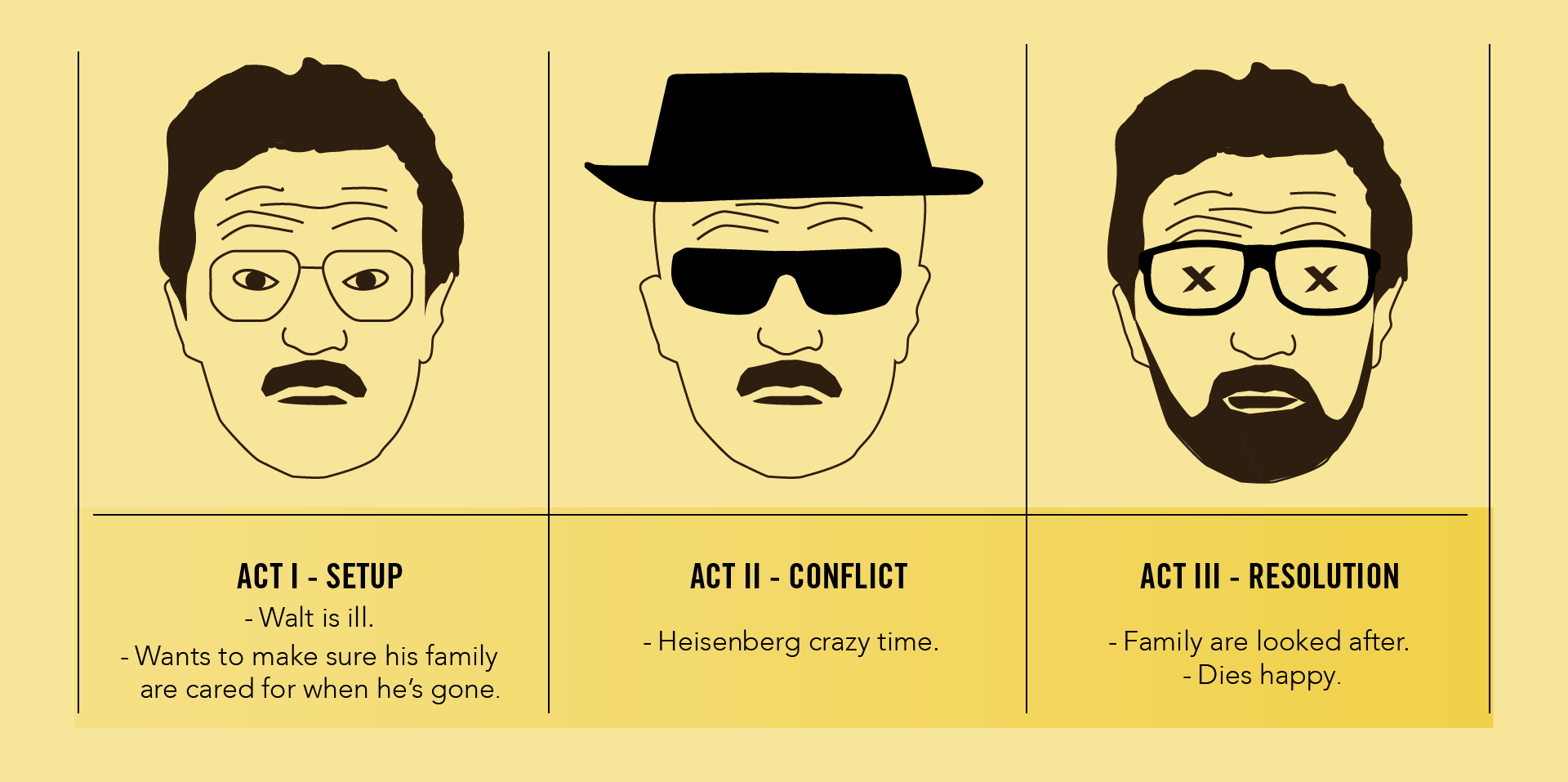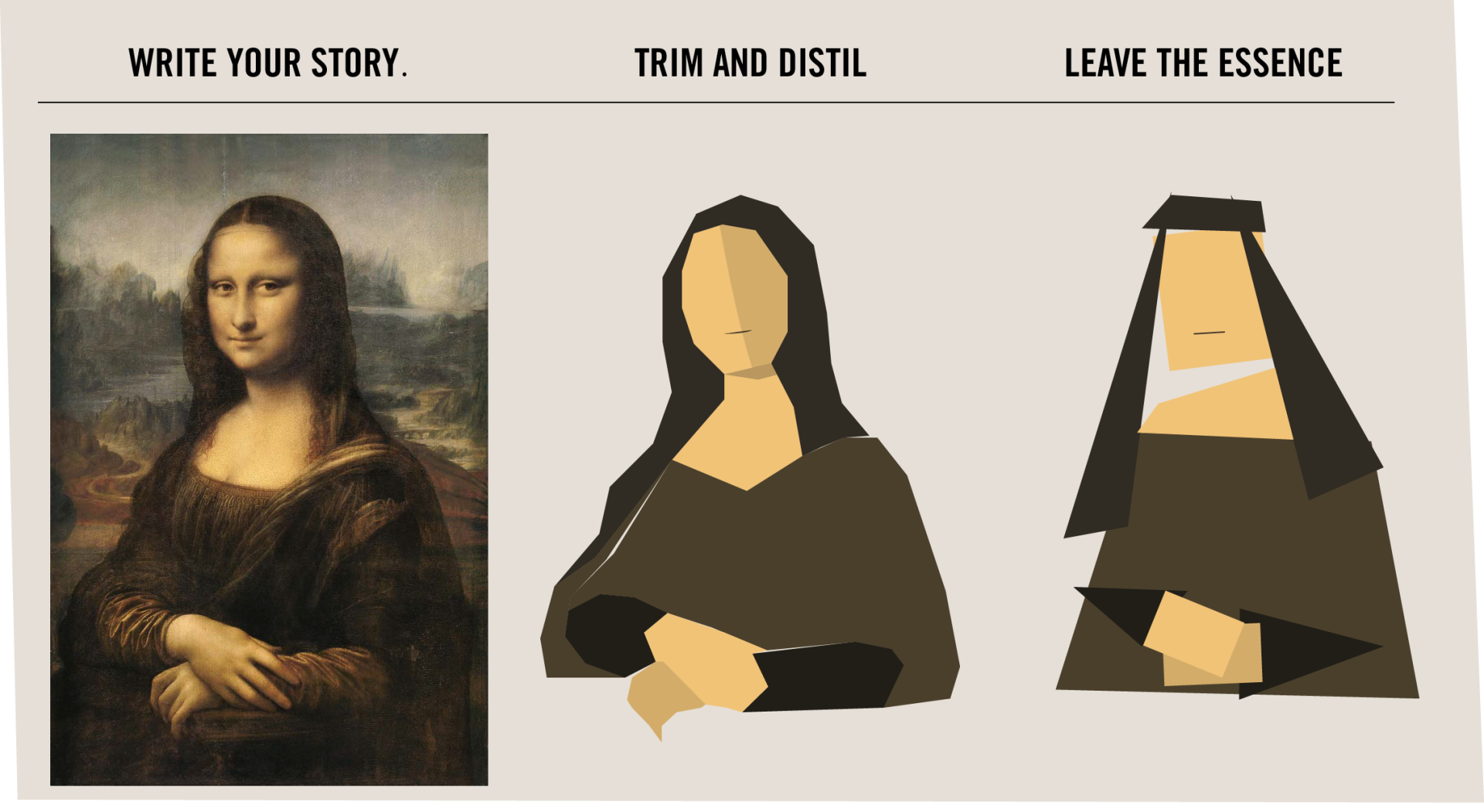Why Tell Stories in the First Place?
Since the dawn of time, humans have conveyed messages through storytelling. And this isn’t a fad on a 2016 trends list; it’s a timeless concept that will never lose its power to build recall with an audience.
I Can Write Pretty Well, But I’m Not the Third Duffer Brother!
Well, the good news is you don’t have to be, or an Amazon bestseller. You just need a good story and a simple trick.
Three-Act Structure
And here it is…the three-act structure. It’s no revolutionary concept, but it is key to telling a good story. It’s been used from Harry Potter to Stranger Things, to ads you may have watched this morning, and it’s simple to use.
It’s all about how to build a story.
All stories have a beginning, middle and end. The trick is to rethink these terms as setup, confrontation (sometimes conflict), resolution…and that’s pretty much it.Let me illustrate using a holistic view of the plot to Breaking Bad...
Since the dawn of time, humans have conveyed messages through storytelling. And this isn’t a fad on a 2016 trends list; it’s a timeless concept that will never lose its power to build recall with an audience.
I Can Write Pretty Well, But I’m Not the Third Duffer Brother!
Well, the good news is you don’t have to be, or an Amazon bestseller. You just need a good story and a simple trick.
Three-Act Structure
And here it is…the three-act structure. It’s no revolutionary concept, but it is key to telling a good story. It’s been used from Harry Potter to Stranger Things, to ads you may have watched this morning, and it’s simple to use.
It’s all about how to build a story.
All stories have a beginning, middle and end. The trick is to rethink these terms as setup, confrontation (sometimes conflict), resolution…and that’s pretty much it.Let me illustrate using a holistic view of the plot to Breaking Bad...




